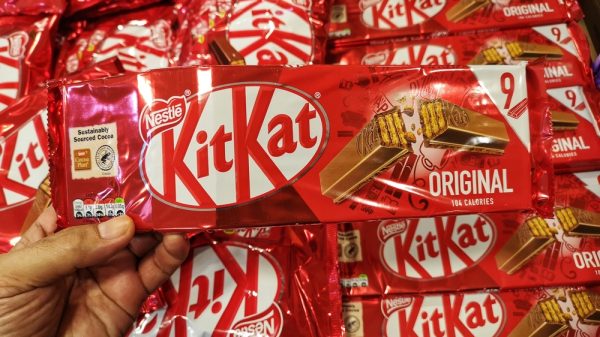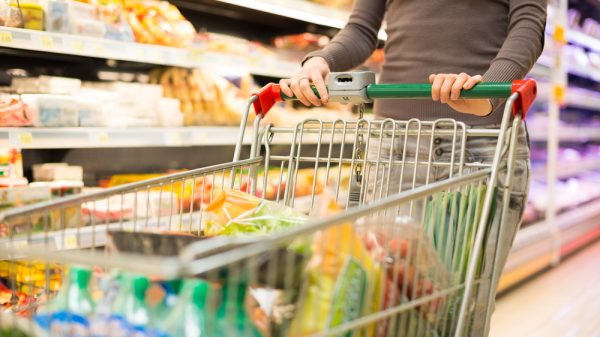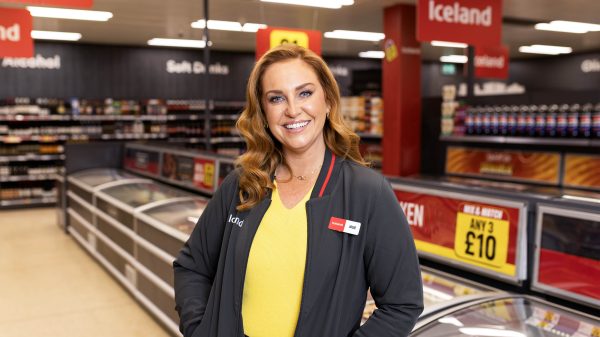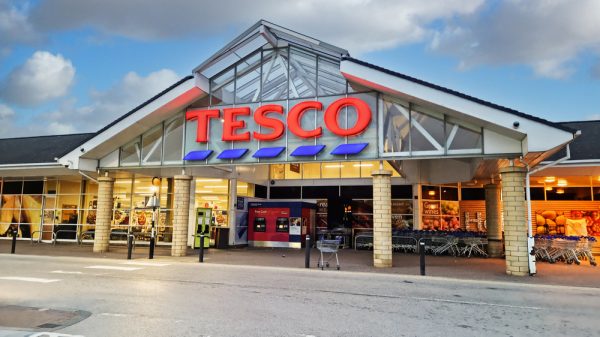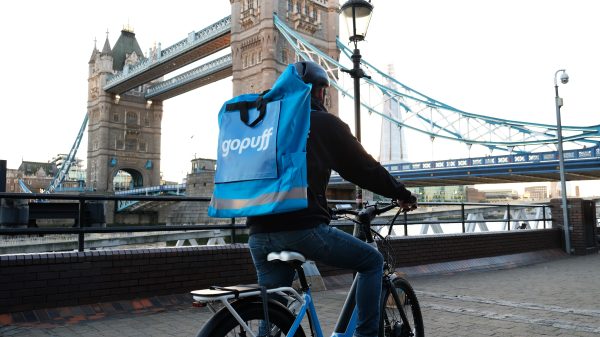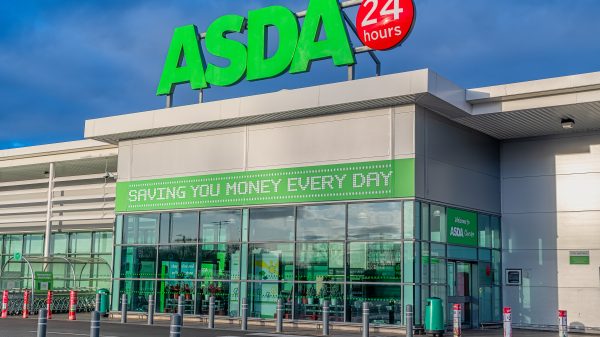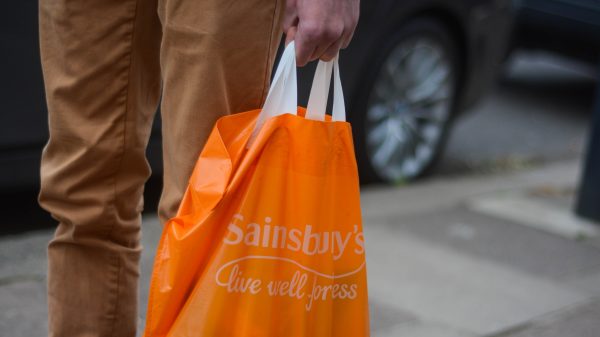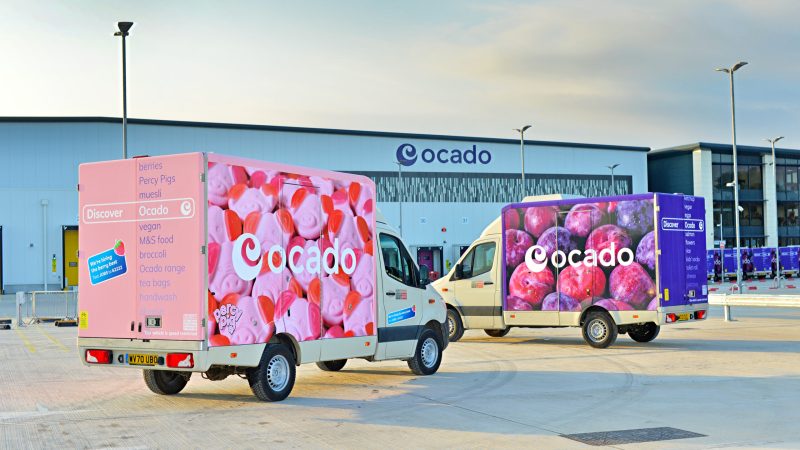The environmental impact of plastic food packaging is enormous, with 141 million tonnes of single-use plastic packaging being produced globally, each year. Around a third of that leaks from collection systems and pollutes the natural environment, while production, use and disposal also contributes about 1.8 billion tonnes of carbon emissions annually.
It’s a significant problem and a global issue, as modern food packaging is essential to ensure that the food we buy is safe, shelf-stable and clean – which in turn plays an important part in reducing food waste.
Unfortunately, most of that packaging is only designed to be single-use, and is typically thrown away rather than being reused or recycled. A large proportion of that plastic waste will typically find its way to the sea or landfill, meaning that packaging waste is still a colossal problem in 2022.
In the Pacific Ocean, there is a plastic dumping ground is called the Great Pacific Garbage Patch. Supermarkets are one of the largest contributors to this floating rubbish tip which continues to grow with 1.14 to 2.41m metric tonnes of plastic entering the sea every year, and currently covers an estimated surface area of 1.6m sq km.
For comparison, that’s about three times the size of France.
The importance of taking urgent action to reduce the impact of plastic packaging on our natural environment is now widely recognised. In the UK – where packaging accounts for nearly 70% of all plastic waste – supermarkets and brands have turned their eyes toward their packaging strategies as they look to play their part in redesigning the way we use plastics.
Talking to Landor & Fitch’s design and product innovation director Jack Holloway, Grocery Gazette takes a deep dive into innovations and decisions brands have made as they look to tackle the worldwide packaging waste issue.
READ MORE: Stop Food Waste Day: Asda refill stores struggle to ‘attract families’
“At the moment, there is a real kind of focus on sustainability and helping our clients make their product and packaging portfolios more sustainable,” said Holloway.
He doesn’t just approach this from a compliance point of view, pointing out that: “We all want to reduce packaging, that’s a no-brainer. What we do is look at how you can use sustainability as more of a tool to engage with your consumers.”
Improving environmental commitments and responsibility is front of mind for most FMCG brands, grocery companies and retailers. However, ‘going green’ is not quite as straightforward as many might expect; it’s not quite as simple as swapping a plastic bottle for an aluminium one.
Holloway said companies need to make a call on their sustainability position early on, as there isn’t a simple answer or a one-size-fits-all solution.
“Actually, there could be two or three options that you need to make,” he said.
“It’s about picking the best thing for you as a brand, so when you come to communicate the innovations or the changes that you’re making, it resonates most with your target audience.”
Although going green is widely considered to be the morally correct thing to do, it is also an important business decision that requires time, money, thought and planning.
READ MORE: Waste not, want not: Why grocers must help consumers reduce food waste
Introducing new packaging
“It’s not always the easiest solution just to reduce packaging, there are lots of different decisions to make and options to choose from,” Holloway explained. “It’s a very time-consuming process.”
The length of the process and the various steps – and costs – involved, means that some brands simply don’t have the capacity or the finances to change their production lines. Holloway cites one large brand he has worked with – they managed to reduce the amount of packaging used, but it took two years for the new production lines to be set up.
The top-to-bottom process requires every step on the supply chain to adapt and adopt new practices. This of course costs a huge amount of money, so big supermarkets and larger FMCG brands are more able to integrate sustainable practices into their supply chain.
Holloway also highlighted that much of the plastic waste could be reduced if the UK had better recycling measures in place.
“Some brands are using biodegradable packaging and the problem is it just ends up in landfills,” he said.
“The UK doesn’t have that infrastructure or the sorting capabilities to create a space where the packaging can biodegrade effectively.”
Despite the efforts from brands, partners and supermarkets, Holloway says that integrating new practices is “not that easy”. The process could take years, he adds, especially with the current supply chain issues and sky-high prices.
And even if those barriers are cleared, a huge proportion of the packaging will still end up in waste landfills and oceans unless recycling practices get better.
READ MORE: PepsiCo vows to reduce single-use packaging
Make packaging more sustainable
An improved recycling scheme that not only recycles more material but a wider variety of material would hugely cut the waste that finds its way to landfills and oceans.
The UK missed its target to recycle 50% of ‘waste from households’ by 2020 as the recycling rate dropped to 44%, down from 45.5% in 2019.
This was largely attributed to lockdown keeping people at home which lead to more household waste – that figure jumped to 22.6 million tonnes from 22.1 million tonnes. However, it also it highlights the shortcomings of local household waste recycling schemes.
James Piper, the author of The Rubbish Book, described it best when talking to The Telegraph. He claimed that while everything can be recycled, the real problem is that “some products can’t be recycled economically.”
Another option is to remove packaging from the equation entirely. Refillable grocers have become more popular over the last few years, with major retailers now trialling refillable dried goods in some of their stores.
“After using those refillable dispensers myself, there needs to be an improvement on that experience,” said Holloway, noting that UK consumers are not fully on board with the concept just yet.
“When people are tired after a long day, the idea of then having to spend an extra four or five minutes in the shop, filling their reusable pots is a bit tedious.”
Focusing on green food packaging
It’s clear that the industry has already come leaps and bounds from the days of single-use plastic carrier bags, but the current recycling infrastructure and difficulties faced by businesses looking to implement greener practices means we are still a long way from minimising the current waste output.
With the climate crisis and sustainable living now at front and centre of our lives, brands, supermarkets and design teams are working together in a bid to make packaging more environmentally friendly.
While corporate responsibility is key, consumers are also driving the change as they increasingly take ethical practices into consideration when making everyday purchases – and packaging is a key part of that.
“if you’re the first to market with an eco innovation, you are going to be a much more appealing brand for consumers,” Holloway said.
Consumers have a huge amount of power in shaping market trends and driving companies to focus on their packaging strategies.
So while people keep campaigning and boycotting, brands and supermarkets will continue to look for ways to engage with those consumer and, ultimately, minimise the environmental impact of their food packaging.
Click here to sign up to Grocery Gazette’s free daily email newsletter

